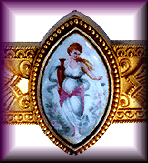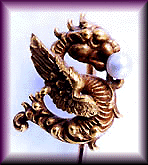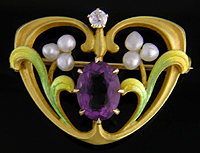|
In 1870, Heinrich Schliemann discovered the Royal Treasury of ancient Troy. Several years later, he was even luckier and unearthed a spectacular hoard of royal jewels at the ancient city of Mycenae in southeastern Greece. Although we may not have an opportunity to search the foothills of Asia Minor or the Aegean isles for buried treasure, opportunities abound locally. Many beautiful (and valuable) jewels lie hidden among forgotten family heirlooms, in grandma's jewelry box and sometimes even at flea markets and yard sales. No matter where it is found - amidst ancient ruins or in your attic - antique jewelry has an allure and mystique which inevitably captivates the antique enthusiast.
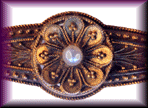
A good starting point, when exploring the world antique jewelry, is the reign Queen Victoria (1837-1901). The Victorian era, spanning the last two thirds of the 19th century, was a time of epic romances, great tragedies and unprecedented prosperity. The jewels of the Victorian Era reflected these ever changing fortunes and are best studied as three periods: the Romantic, the Grand and the Aesthetic.
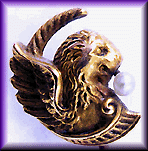
The Romantic Period (1837-1860) began with Queen Victoria's ascension to the throne. In 1840, Victoria married Prince Albert and their love and complete devotion became the impetus for the Romantic era. Since the supply of gold was limited at this time, the jewelry of the period is characterized by light, open gold work using the techniques of filigree, piercing, cannetille and repoussé. Many pieces were also fabricated from thin plates or sheets of gold that were produced in a die roll, then chased and engraved. The use of these techniques (filigree, cannetille, chasing and repoussé, die rolling and engraving) gave the illusion of mass and size, while only using a minimum amount of precious metal. Gold plates were soldered to the back of the piece for support and the jewels were often accented with seed pearls, turquoise and pink coral. Other gemstones used in the jewelry of this period include blue zircon, "pinked" topaz (heat treated), amethyst, peridot, citrine, aquamarine, garnet, ruby, sapphire and emerald. Natural materials such as tortoise shell, lava, jet, gutta percha, bog oak, ivory and vulcanite were also popular, especially for carved pieces and cameos.
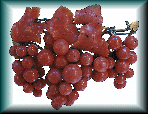
Common motifs were serpents, a symbol of eternity, and sentimental lockets encasing a lock of hair from a loved one. Other sentimental themes included love and song birds, love knots, clasped hands, hair jewelry, Mizpah and miniatures. Often a jewel displaying these sentimental motifs would contain a hidden message. For example, a brooch with a honeybee and a crescent moon could represent the word "honeymoon" and would possibly be a gift from a husband to his new bride on their wedding night.
The braiding or plaiting of hair for jewelry was a technique passed down through the family from mother to daughter. Intricately woven hair would be fashioned into bracelets, earrings and brooches with gold fittings, while simple locks of hair could be enclosed within the glazed compartment of a hair locket. Hair jewelry was used for both Memorial (mourning of a deceased loved one) and Sentimental (remembrance of a living, but distant friend or loved one) gifts.

Queen Victoria also established a strict etiquette for daytime dress and evening wear, including the types of gems and jewelry that could be worn at court. Diamonds were only to be worn with evening wear, and only by married women, because diamonds were the customary gift from a man to his wife. If an unmarried woman appeared in court with diamonds, she either inherited them or they were assumed to be a gift from a lover. The display of inherited wealth was considered vulgar during this period and since all unmarried women were supposed to be pure, the wearing of diamonds from a lover was socially unacceptable!
With this strict protocol in mind, daytime wear was typically more diminutive, simpler and contained fewer stones, while jewels for high court and evening events displayed diamonds and colored gemstones in more elaborate designs and forms.
Early Victorian lifestyles and design were also greatly influenced by the First International Exhibition at the Crystal Palace in 1851 at London. During this magnificent fair, the public viewed and experienced the numerous technological advances of many nations worldwide. Throughout the great halls of the Crystal Palace were spectacular displays of jewelry, decorative arts, fabrics and ceramics from all over the world.
The Victorian people were enamored with flowers and especially with the symbolic meaning attached to various flowers, as defined in the book, "The Language of Flowers". Often the jewelry of the early Victorian period depicted flowers which carried special meanings. Among these were Forget-Me-Nots symbolizing True Love, Ivy for Fidelity, Lily-of-the-Valley representing Sweetness, Acorns for Life and Immortality, Pansies representing Thought, Petunias for Anger, Yellow Poppy for Wealth and Success, The Sweetpea for Good-bye, Violets signifying Modesty, and Mixed Zinnias representing Thinking of an Absent Friend.
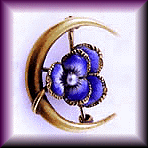
Early Victorians also enjoyed jewelry with other hidden meanings, such as acrostic bracelets where the first letter of each gemstone spelled a word of friendship or other special significance (for example, a bracelet set with a Ruby, Emerald, Garnet, Amethyst, Ruby and Diamond spelled out the message "REGARD", or Lapis, Opal, Vermeil (a Victorian name for hessonite garnet and other reddish-orange gems), and Emerald for "LOVE").
Queen Victoria's purchase of the Scottish castle, Balmoral, in 1848 generated renewed interest in Scottish pebble jewelry featuring ancient Celtic motifs. Pebble jewelry consisted of gold or silver designs ornately engraved and inlaid with polished agates, jaspers and granites from the Scottish Highlands. Some Scottish pieces also featured large smokey quartzes from the Cairngorm Mountains of Scotland. Motifs included garter buckles, thistles, the Luckenbooth, anchors, arrows, hatchets and knots.
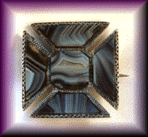
In 1861, the Romantic Period abruptly came to an end with the death of Victoria's beloved husband, Albert, thrusting Victoria and her more loyal subjects into deep mourning for 27 years! (These folks obviously needed some serious bereavement counseling!) The jewelry of this period was sombre and more austere in design. Heavy, dark stones (onyx, jet, amethyst and deep red garnets) were set in gold jewels with black enamel tracery. Coinciding with this lengthy mourning period was the Grand Period, so called because of the grand way in which gems, jewelry and metals were used. During this period, gold was discovered in America (1849) and Australia (1852), greatly increasing availability of this precious metal to jewelry designers.
With the increased availability of gold came a resurgence of ancient gold-working techniques and designs. Discoveries of ancient civilizations and tombs ushered in a revival of Etruscan, Egyptian, Classical, Architectural and Renaissance styles. The lost ancient Etruscan art of granulation was studied and mastered by the Castellani's, Giacinto Mellilo and John Brogden, while Giuliano excelled at creating enameled pieces in the colorful Renaissance and Holbeinesque styles.
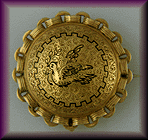
English families often traveled to Europe for The Grand Tour and while visiting famous landmarks, they purchased mementos and souvenirs of their trip. Cameos from Naples, Pietra Dura (hard stone inlay mosaics) from Florence and micromosaics from Rome (in particular, the Vatican Workshop), were brought home and set by local jewelers. These souvenirs of the Grand Tour often depicted scenes of the famous ruins and monuments (the St. Peter's Square, the Coliseum, etc.) as well as mythological themes (Diana, Hebe, Psyche) and historical figures (Plato, Magellan, Caesar).
Along with increased travel during this time, there was a growing interest in sports and jewelry depicting sporting themes. Men and women alike pursued this interest in sporting subjects. Reverse-painted intaglio crystals (also commonly called Cook's crystals) displayed hunting themes, horses, foxes, dogs, pheasant and rabbits and were incorporated into many forms of jewelry, including buttons, stickpins, brooches, pendants, cufflinks and watch fobs.
Three other important events greatly influenced the culture and jewelry design of the Middle Victorian Period. In 1859 construction of the Suez canal began and for the next ten years the newspapers were almost exclusively devoted to stories on the canal's progress along with pictures of Egyptian scenery and architecture. You could say that the Suez canal was one of the major media events of the Victorian era. The continual coverage of the canal and Egyptian themes quickly inspired jewelry designers, architects and artists.
Stylized palmettes, lotus flowers and scarabs were a central design element in Egyptian Revival pieces which incorporated enamels, gemstone inlays and twisted-wire rope-like borders.

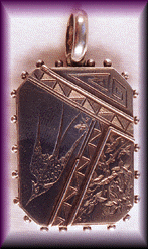
 Another tremendous influence on Victorian design, and perhaps the most significant, was the opening of trade relations with Japan in 1853. By the 1860's numerous examples of Japanese craftsmanship inundated the English community and soon the "Japonaisse" style was incorporated into every form of design from jewelry, clothing and fabric to paintings, furniture, decorative arts and even architecture. Well into the next century, Japanese motifs - stylized fans, naturalistic themes (flowers, cattail weeds), dragons and insects - were expressed in jewelery using the ancient Japanese enameling and metal inlay techniques of Shakudo, Shibuichi and Satsuma.
Another tremendous influence on Victorian design, and perhaps the most significant, was the opening of trade relations with Japan in 1853. By the 1860's numerous examples of Japanese craftsmanship inundated the English community and soon the "Japonaisse" style was incorporated into every form of design from jewelry, clothing and fabric to paintings, furniture, decorative arts and even architecture. Well into the next century, Japanese motifs - stylized fans, naturalistic themes (flowers, cattail weeds), dragons and insects - were expressed in jewelery using the ancient Japanese enameling and metal inlay techniques of Shakudo, Shibuichi and Satsuma.
A third important catalyst of this time developed when Victoria was crowned Empress of India (1876), thereby encouraging trade between the two continents. The profusion of Indian imports included exotic woods, brightly colored silks, enameled pieces and gem encrusted Moghul jewelry, all of which quickly influenced the jewelry and decorative arts produced in England. Rose-cut garnet encrusted jewels and cloisonné enamels patterned after Indian fashions quickly worked their way into the English design lexicon.
The late Victorian Period, known as the Aesthetic Period or Movement (1880-1901) was a direct response to the over indulgent fashions and to the stuffy formality and strict protocol of the Grand Period. And after 27 years of mourning, even the staid Victorians had lamented enough. During the Aesthetic Period a sense of fun and light heartedness returned to jewelry. Whimsical motifs such as griffins and dragons, crescent moons and stars, butterflies and salamanders, were crafted into jewels of astounding beauty.
Diamonds, from mines recently discovered in South Africa, added a sparkle and luminescence to jewelry which contrasted with the dark, somber tones of the Mourning period. The invention of electricity and the light bulb along with Victoria's Diamond Jubilee anniversary (1897) encouraged the growing use of the newly discovered diamonds from the "Dark Continent".
Although Queen Victoria still influenced fashion among her more conservative subjects, her daughter-in-law, Princess Alexandra, became the celebrated dignitary around whom fashion styles followed. Princess Alexandra was to the late Victorian period what Princess Diana has been to the 1980's and 1990's English culture. It is during this time that Alexandra popularized the star and crescent motifs common to Aesthetic period jewels, often encrusted with diamonds, coral, pearls, turquoise and/or sapphires. Alexandra is also known for favoring the dog collar necklace which became a mainstay of a later era in jewelry history and design, The Edwardian Period.
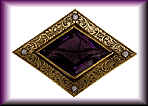
During the Aesthetic Period artistic merit was valued above preciousness and intrinsic value; jewelry designers often placed more emphasis on the quality of craftsmanship and single gemstones, rather than overly ostentatious displays of multiple gemstones in mass-produced pieces. Polychromatic enamels and colored gemstones created a livelier mood in the jewelry and many stones were chosen for their expressive nature, rather than their monetary value. Sterling silver jewelry made in Birmingham also became quite popular, especially those items depicting novelty themes such as circus characters, boats, insects, sporting scenes (bicycling, horseback riding, tennis), hunting animals (spaniels, rabbits, foxes) and Japanese fans.
When studying jewelry history, it is helpful to also study the clothing and hair fashions of the time. For example, during this late Victorian Period, hats became very popular. In fact, hats became much larger and more ostentatious than ever before, often decorated with large feathers, plumes and real birds (stuffed, of course). With this increased use of large, heavy hats, came the need for longer hat pins to hold these enormous head ornaments in place!
Lovers of antiques inevitably become collectors of books about antiques and the same is true for lovers of antique jewelry. Two of our favorite books on Victorian jewelry are Victorian Jewelry - Unexplored Treasures by Ginny Dawes and Corinne Davidov and Antique and 20th Century Jewellery by Vivienne Becker. If you cannot find these books at your local library, please contact us and we will be happy to special order them for you.
|









